I scarcely had time to recover from my trip to Yosemite before it was time to embark on yet another adventure up north, aboard MEGABUS! I got one heck of a deal on this trip to San Francisco: $2 each way! Since this is the tail end of the promotion, I packed this trip full of landmarks and parks, over 40 in one day! It was a stretch, but after all my mapping and prep work, I was pretty confident in my ability to see them all. Of course, this was my first landmark hunt completely on foot and by map, and there were some obstacles for which I was totally unprepared!
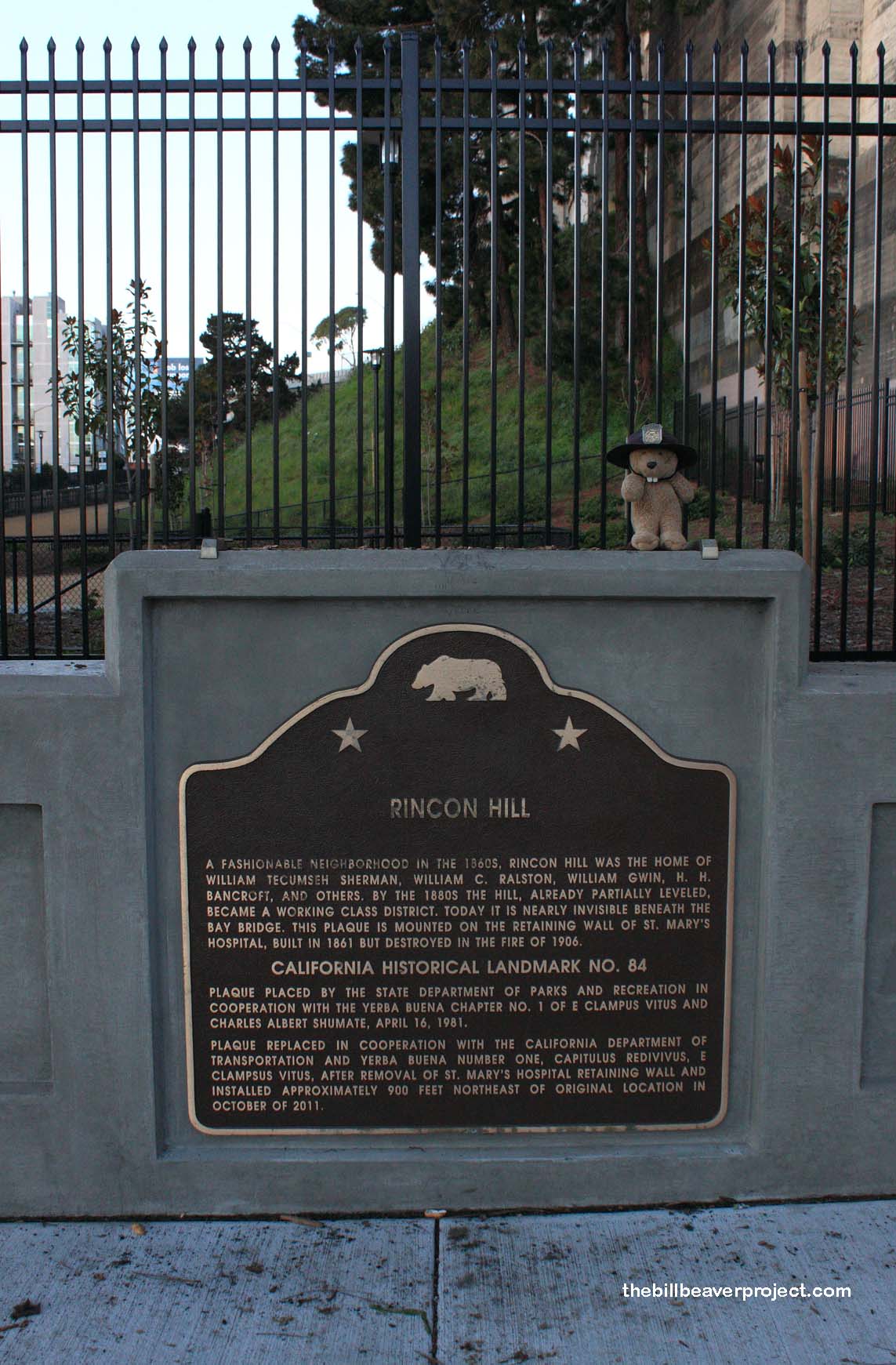 |
I got off the bus with an aching neck and an important lesson: when driving overnight, pick the most comfortable seat, not the one with the best view. The window seats didn’t recline, so I had to curl up and hope nobody sat on me. That can disturb a beaver’s slumber for sure! MEGABUS arrived in San Francisco half an hour early, which was encouraging, and, making a split decision, I reversed my original route to see the majority of the landmarks up front, just in case there should be a setback. All started off smoothly as I passed through the land of the homeless to Rincon Hill (#84), the first of many landmarks to have been demolished by modern pursuits. San Francisco is pretty thorough with commemorating places, but on this tiny peninsula, there isn’t a whole lot of room to set aside historic parks.
 |
 |
Then again, some places, like Union Square (#623) and the Birthplace of the United Nations (#964) still stand in all their glory. Both are intrinsically linked to warfare! Union Square was the pro-Union gathering site on the eve of the Civil War, while the UN War Memorial Complex arose in 1945 at the end of the second World War to rebuild cooperation among different countries and hopefully produce an end to wars! (It’s been a rocky start, but great ideas take time!)
 |
 |
The majority of places have been modernized, with plaques stuck on walls in unattractive alleyways. Now an Omni Hotel, the Parrott Granite Block (#89) of 1852 was formerly a banking facility built entirely out of granite imported from China! Fort Gunnybags (#90), now in the garbage area of 24-Hour Fitness, was formerly the Headquarters of the Vigilance Committee, a very powerful vigilante group that often defied the government in hunting down and executing suspected criminals!
It got kind of depressing, actually, to see so many plaques in run-down places, but the majority of these sites had already been lost in the Great San Francisco Earthquake of 1906 or one of many fires that swept through the city! I suppose, in that way, San Francisco can be commended for its resilience and for commemorating these long-gone historic places!
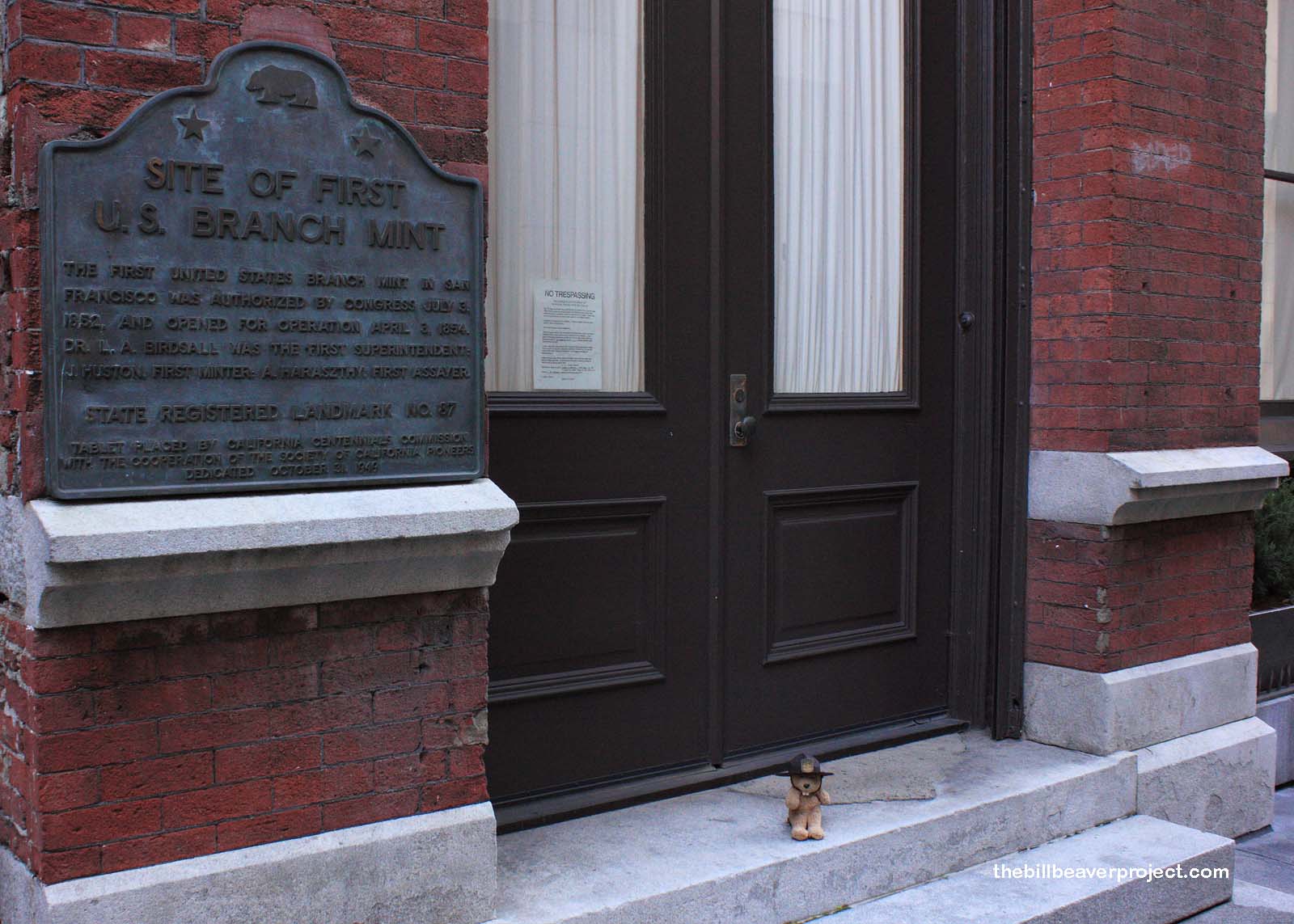 |
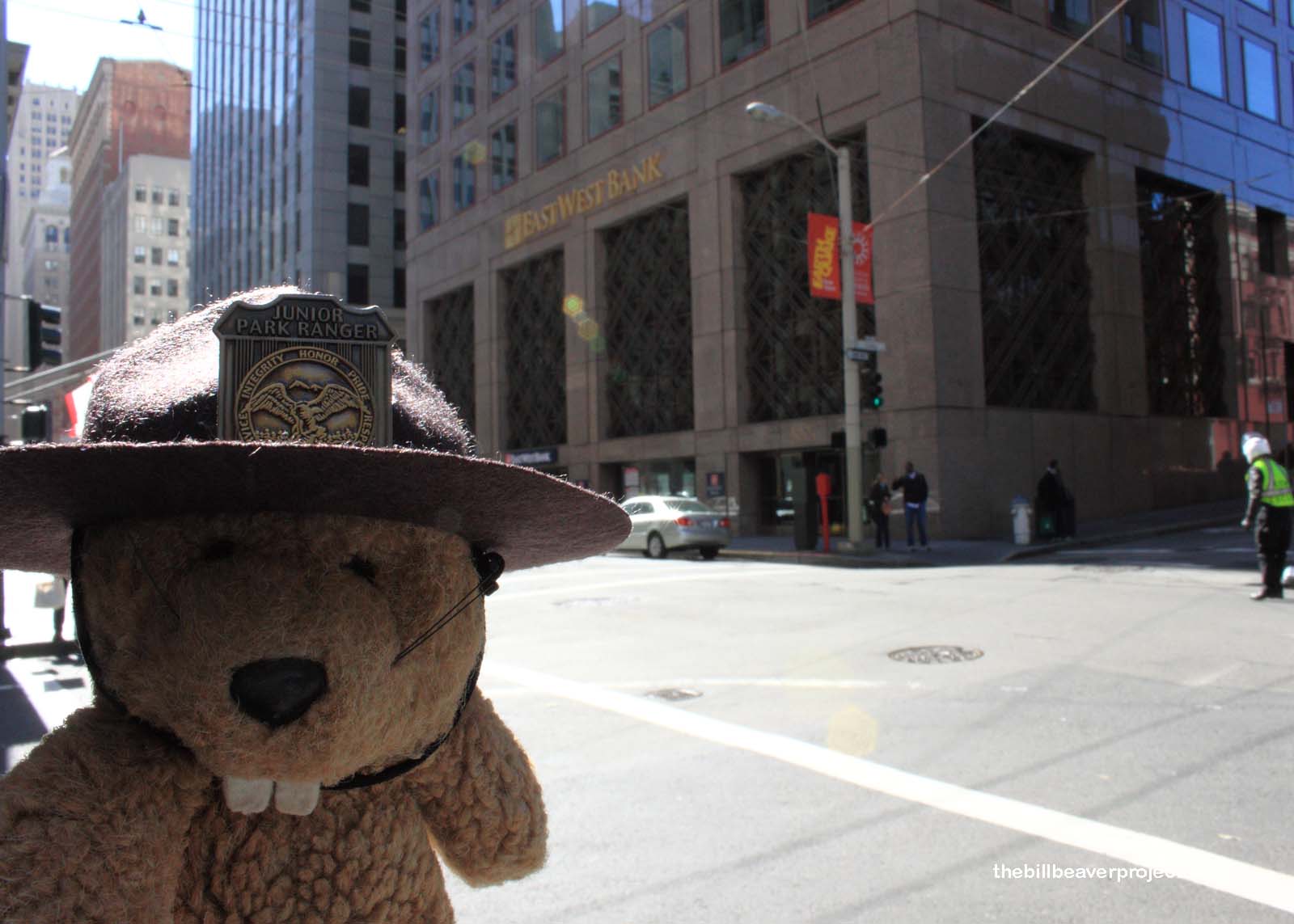 |
The challenge surfaced once I reached the heart of the city, where many landmarks clustered together within a few blocks. Some, like the First US Branch Mint in California (#87) stood right where the map indicated, but others, like the Site of the Brick Building of the Firm of Mellus and Howard (#459), did not. It took a long time hunting for the latter and even longer asking for information in the Pacific Heritage Museum inside the US Branch Mint.
Museums are wonderful, dangerous places; the smaller they are and the greater your haste, the more dangerous they are! That’s because historians love to talk, and even more than that, they love to give tours. For free!
That’s how I got introduced to the interior of the US Branch Mint, with one original wall still intact after the 1906 earthquake and some of the Mint’s original silver dollars downstairs in the vault! There was a fascinating exhibit about Chinese-American students returning to the villages of their grandparents, and though intrigued, I left without a single clue about the Mellus and Howard plaque, only that the building occupied the same general site as the Mint. So, I improvised!
 |
I wiggled around Portsmouth Plaza, where Chinatown was abuzz with Chinese New Year celebrations, which surprised me because I thought the Lunar New Year was weeks ago! Nevertheless, the delays of Mellus and Howard had pushed me so far back that I couldn’t stay to enjoy the festivities as I’d promised myself two years ago. I scrambled around Portsmouth Square, where the first American flag was planted in California, the first public school arose, and Sam Brannan announced his gold discovery in 1848, before heading north to a site that filled me with nostalgia: Philo T. Farnsworth’s Green Street Lab (#941). Here, Mr. Farnsworth invented television as we know it, after a long journey from his home in Beaver, Utah, which I visited in 2011 with my brother, Woodchuck. Ah, memories…
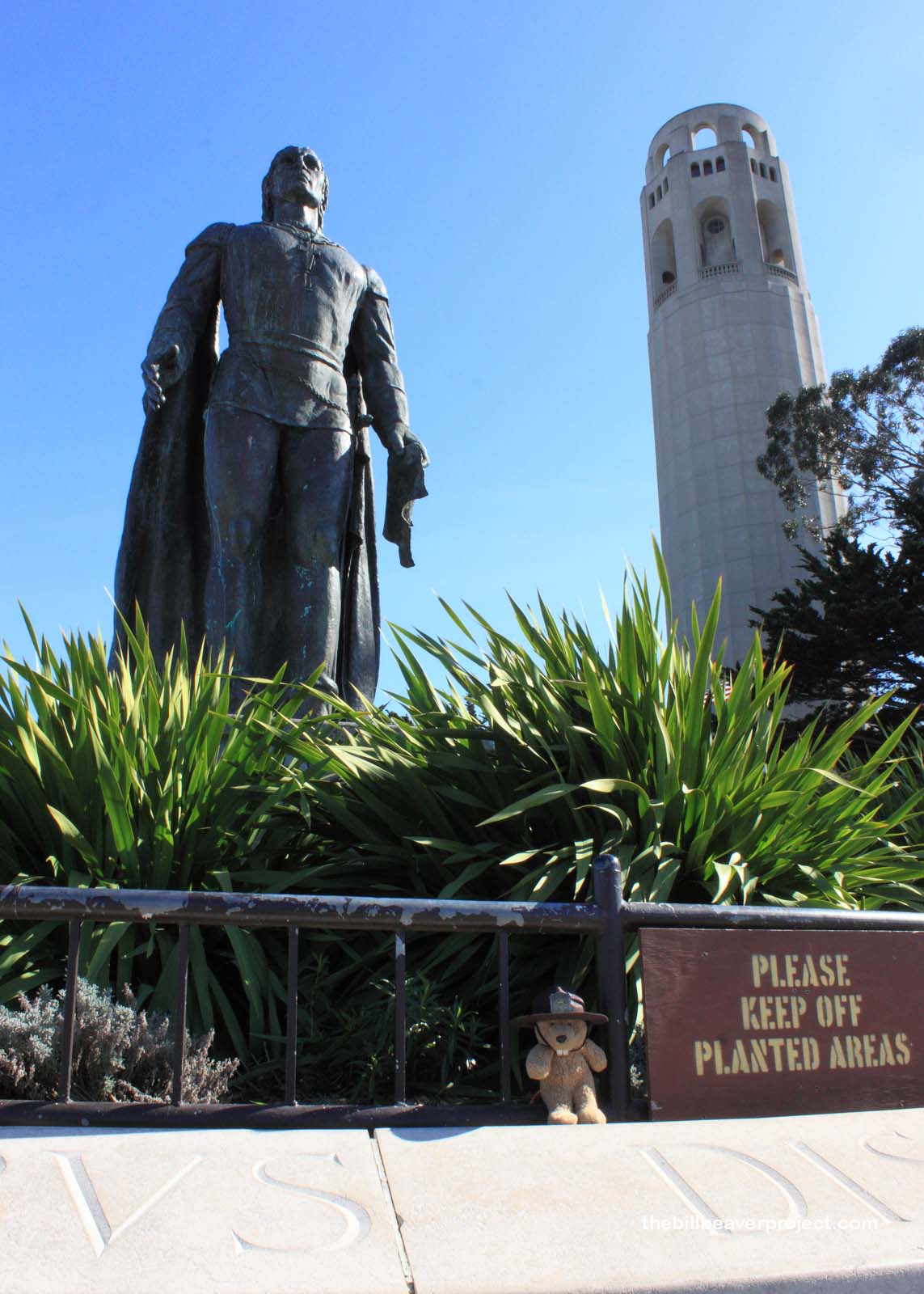 |
 |
By now, I was getting fatigued, but still had so much distance to cover! The 400 stairs to the top of Telegraph Hill (#91) did not help at all, but once I reached the top, drenched with sweat in February, I just had to take the lift to the top of Coit Tower! Built in 1933 to honor the firefighters beloved by Lillie Hitchcock Coit in her childhood, the tower stands upon the site of an old semaphore, which used to signal the types of ships entering San Francisco Bay! Now, it is a useful reference point for walking through the city and home to some famous parrots, who were unfortunately out when I came to call!
 |
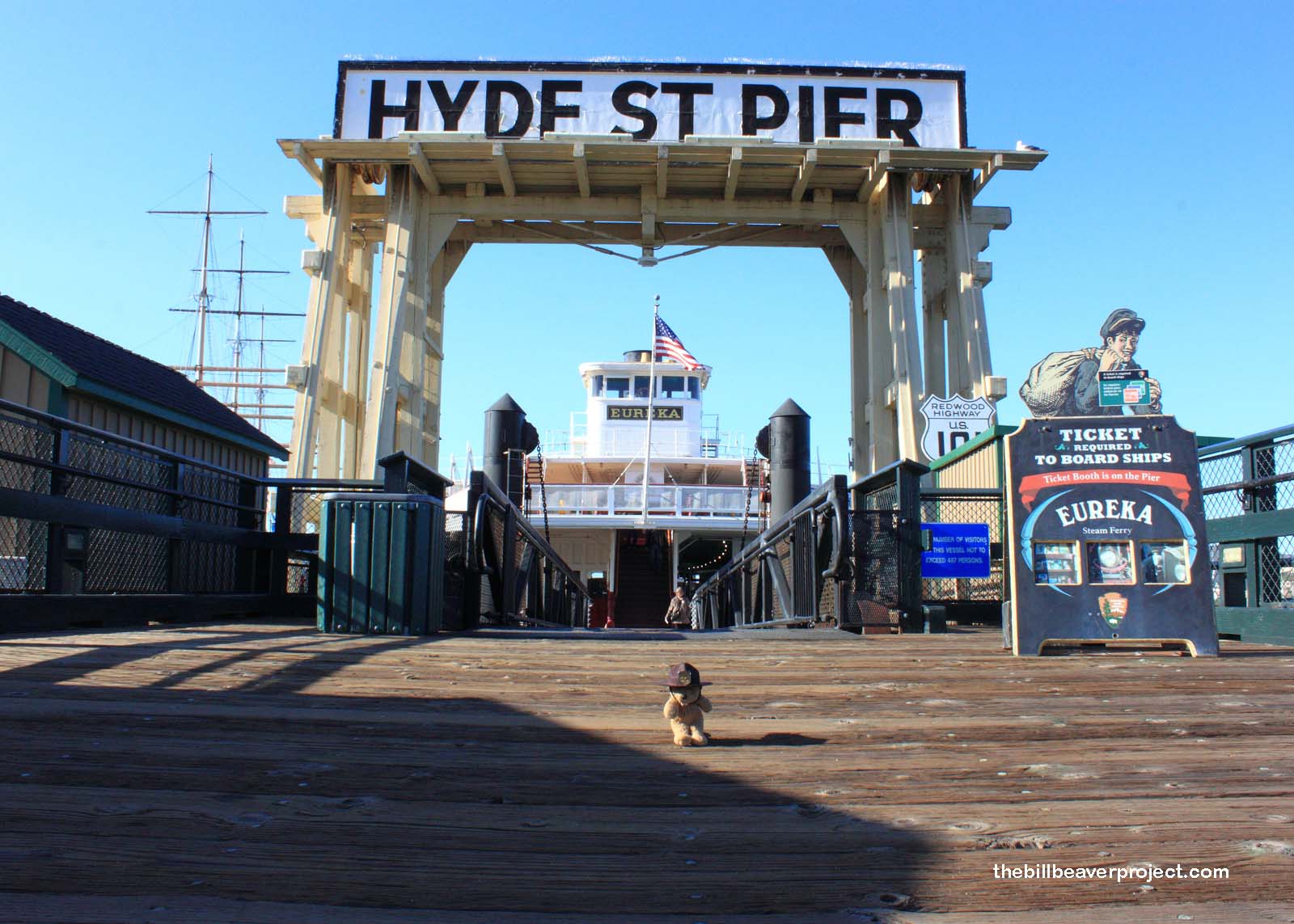 |
Finally, having seen 35 landmarks, I reached what I had originally planned to be my halfway point: the San Francisco Maritime National Historic Park! This park commemorates the Bay’s long history as a port from the moment the San Carlos (#236) entered the San Francisco Bay in 1775 to the present day. Ships have always been important to the Bay Area, and San Francisco’s value as a port is the only reason it grew to its prominence today (there’s no fresh water here, so it was hardly a great place to settle)! Different ships fulfilled different needs of the San Franciscans, of course, and that is what the San Francisco Maritime Historic Park and the ships of the Hyde Street Pier still preserve today!
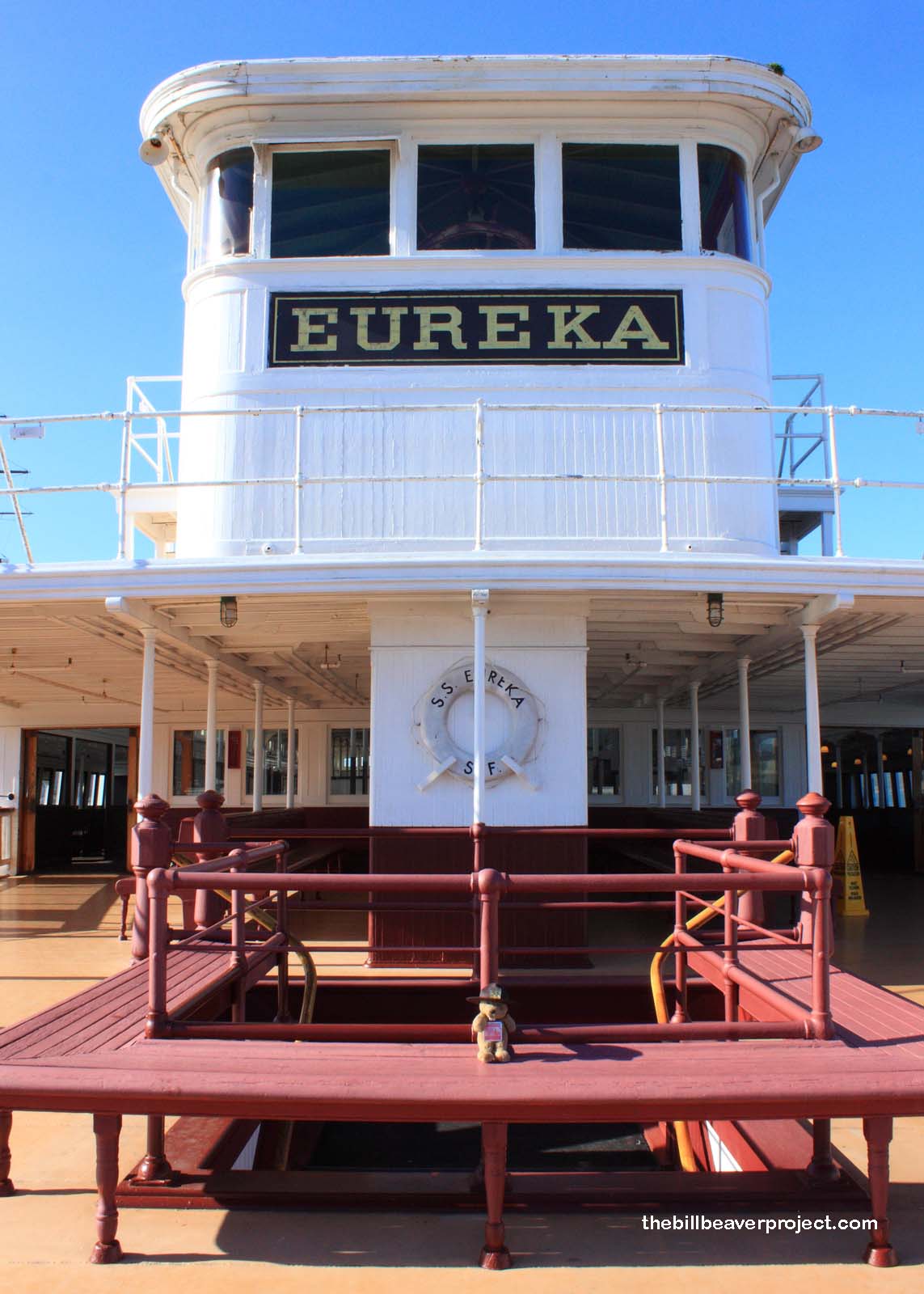 |
I started on the Eureka, a steam ferryboat, originally named the Ukiah when she ferried trains between Sausalito and San Francisco. At the end of World War II, she underwent some major repairs and was reborn as the Eureka, commuter boat extraordinaire, capable of transporting 2,300 passengers and 120 automobiles in a single trip! That was especially useful for folks who wanted to work in San Francisco but live across the Bay, where there was fresh water. Ferryboats, like the Eureka, also played a major role in bringing thousands of gold seekers into the Bay Area and giving the area a population boom!
 |
Next in the loop came the Hercules tugboat, a truly impressive vessel. Hercules tugged her sister ship, Goliah all the way from Camden, New Jersey around the Strait of Magellan to San Francisco! This was not an uncommon trip for a boat like this, actually, because winds to the west of South America made sailing up the coast particularly difficult. Sometimes, the big ships that couldn’t, needed help from a little tugboat that could! Hercules transported lumber and pulled other ships to their final destinations (mostly museums) until 1962, when diesel-powered tugboats took over. Now, she rests in stately splendor on the Hyde Street Pier!
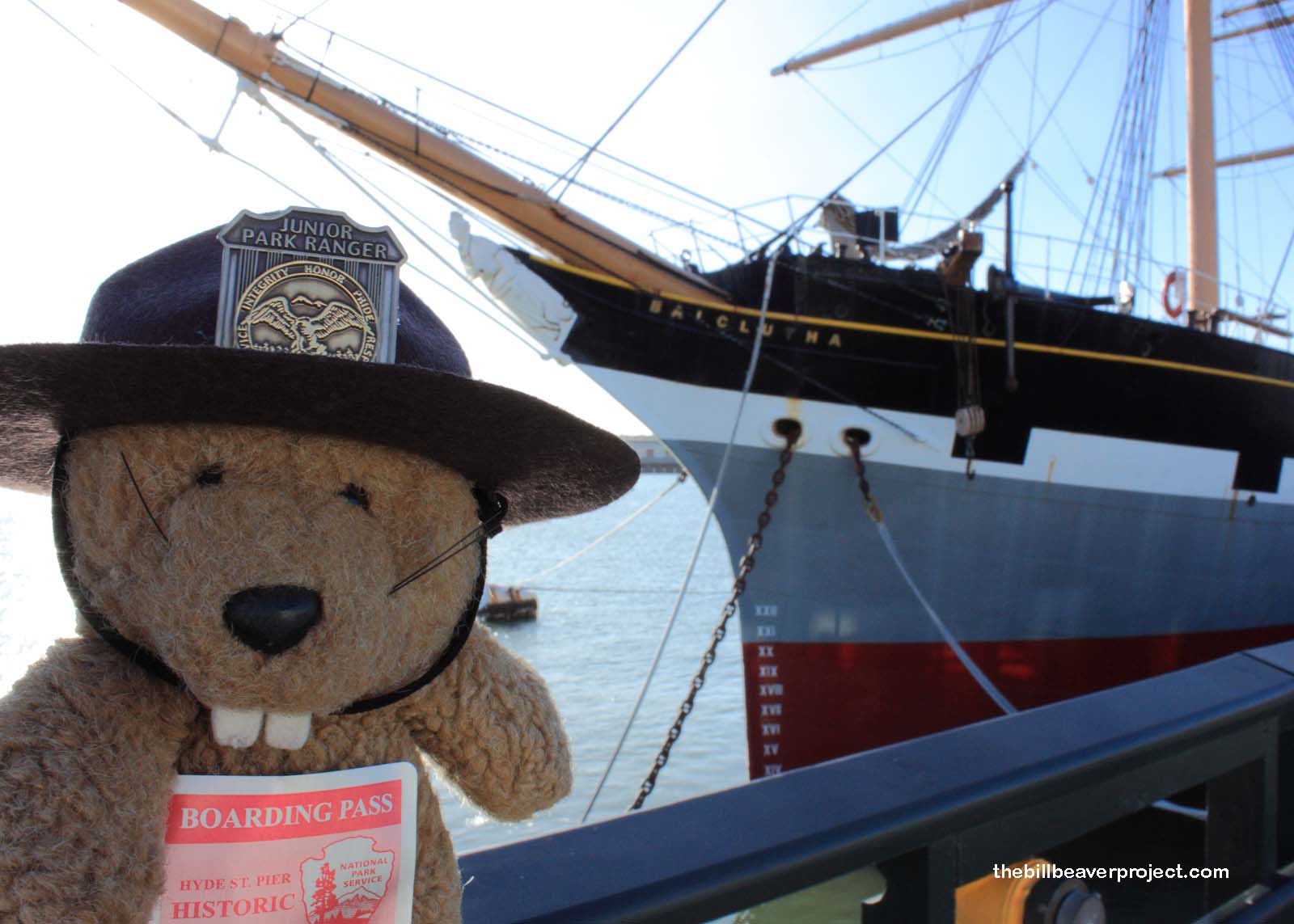 |
 |
The name of the next ship chilled my blood: Balclutha… Though the name either comes from Balclutha, New Zealand or the Gaelic name for Glasgow (Baile Chluaidh), I felt something ominous about this square-rigged vessel as I came aboard. She is a vessel with three faces, first, that of a British deepwaterman, primarily trading coal and grain, until she ran aground in 1904!
The Alaska Packers Association bought her and renamed her the Star of Alaska, just like the Star of India in San Diego. In fact, all iron and steel sailing vessels owned by the Packers carried the title of “Star of!”
She carried canned salmon for the Packers for 29 years until she retired and was purchased by carnival biker, Frank “Tex” Kissinger. You may recognize her from her appearance in Mutiny on the Bounty!
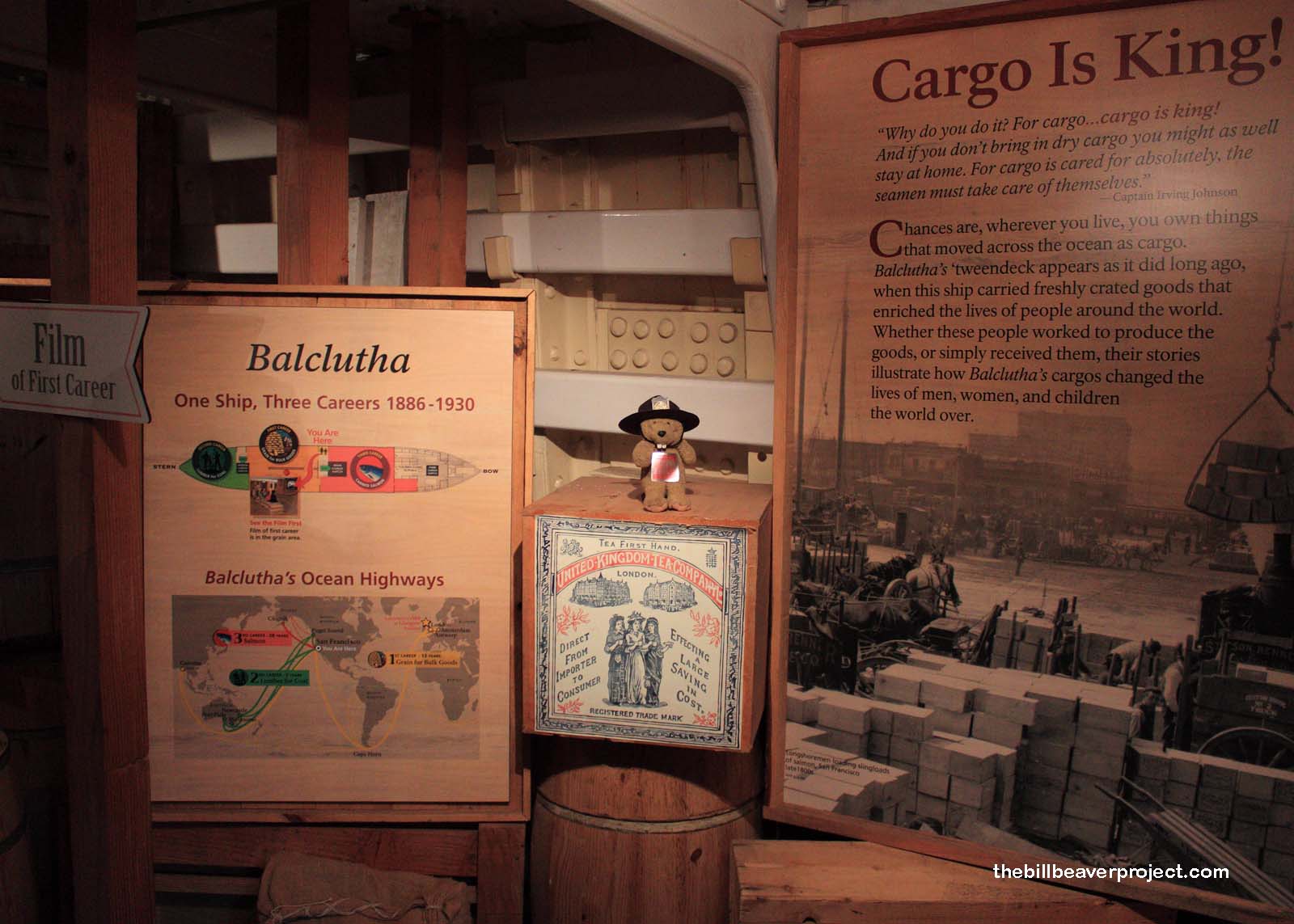 |
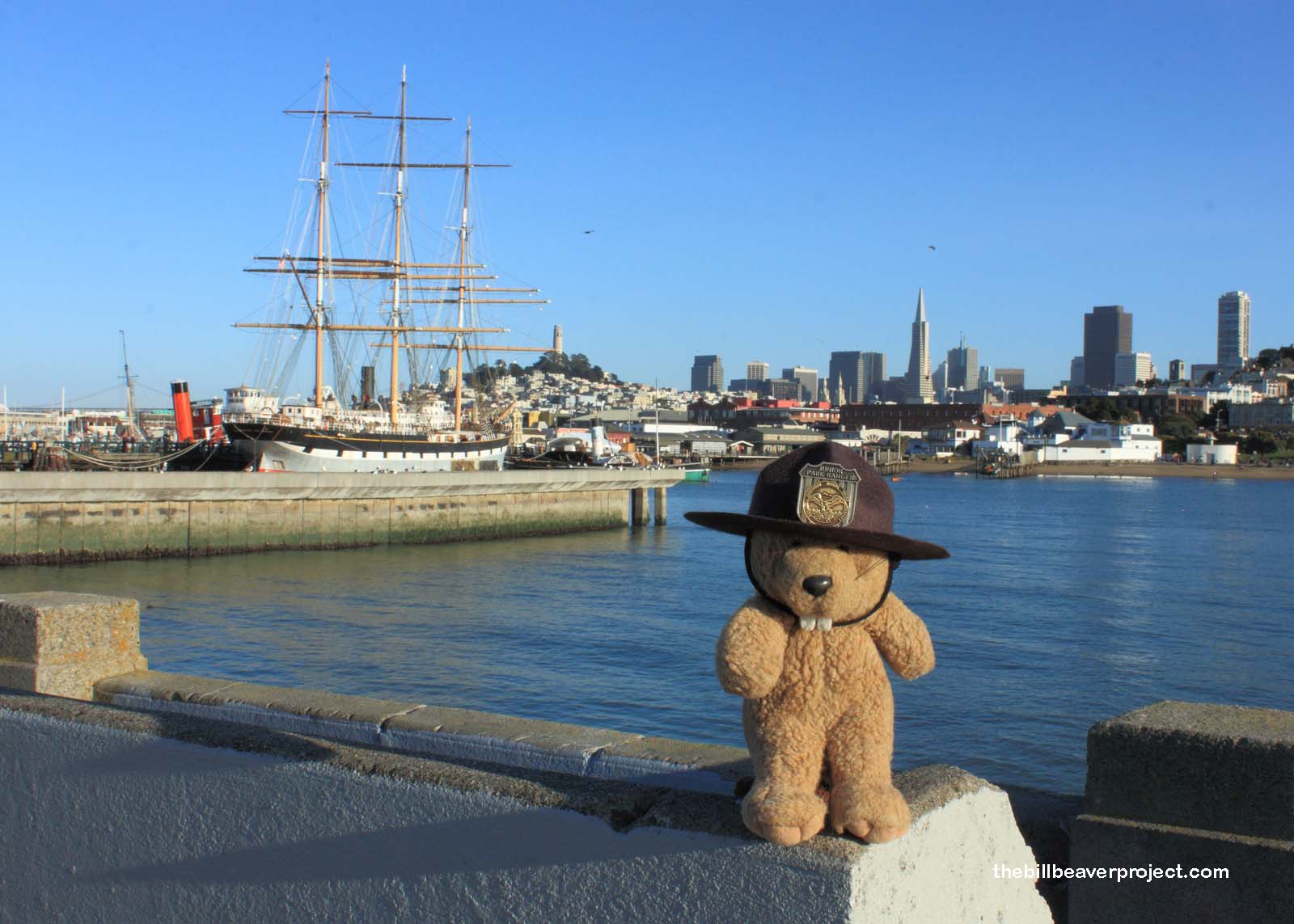 |
However, fascinating as her history was, the thrice-renamed Balclutha held a dark secret: she is carnivorous! Deep in her cargo hold, as I set the camera and clambered to the top of what looked like an exhibit of solid boxes of canned salmon, I discovered to my horror that the boxes were a façade! They were less than two inches thick, and in my momentum, I lost my balance and fell back into a tiny, isolated room!
Dazed, but not hurt, I scrambled to get out again, calling as loudly as I could for help, but most of the people on the ship were in another room, listening to a special Chinese New Year presentation! Well, someone must have heard, because after fifteen minutes, the door opened, and a ranger let me out again, surely surprised to have found a beaver in his office! Anyway, the experience left me shaken, and I bolted from the ship back to dry land, where the daylight had begun to fade.
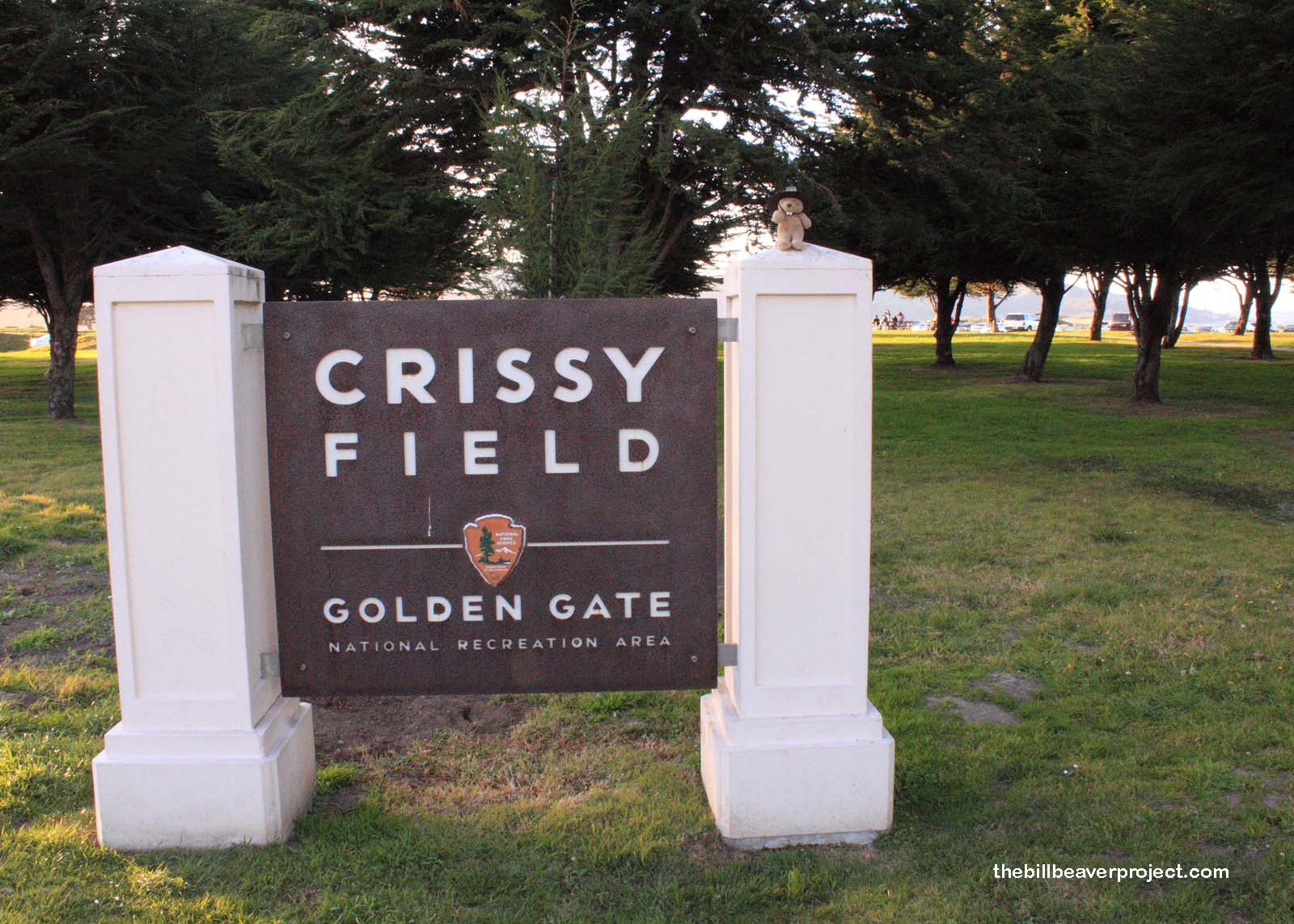 |
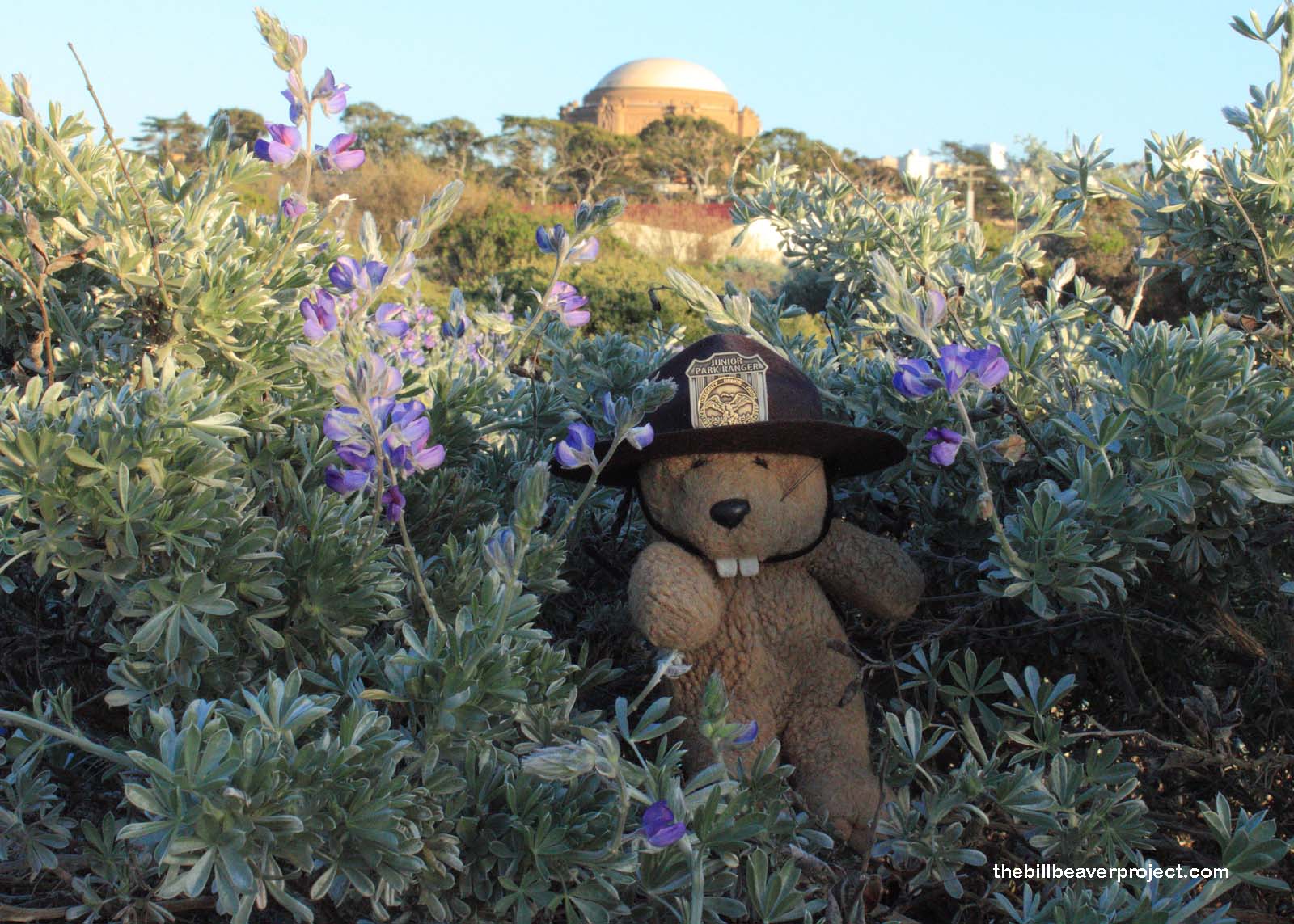 |
The Presidio seemed safer after all, and though I knew I would have to make cuts to my itinerary, I wanted to at least see this park before the sun set. It was a much longer walk than I expected, about two miles. By the time I arrived at Crissy Field Marsh, a restored, endangered tidal marsh, it was almost dusk, and my planned route up to the main Presidio was completely blocked by construction of the Presidio Corridor! I was out of luck! By the time I swung wide and made it to the visitor center, the sun was down and my camera battery was dead. Planned parks and landmarks: 2 and 45. Visited parks and landmarks: 1 and 35.
 |
I learned a valuable lesson from this trip: don’t pack each day too tightly! Doing that decreases your enjoyment of each site and the quality of the pictures! Plus, you never know when a 126-year old ship will try to swallow you whole! In any case, I made the most of the rest of my evening, enjoying a sundae at Ghirardelli Square, dinner with some good friends, and a wild ride back to the Caltrain station aboard the party bus!
See, the Chinese New Year celebrations had disrupted the cable car system, so a crazy bus driver picked us up and promised to get us to the Caltrain station in 5 minutes, using an “old Chineee secret!” Along the way, the informative driver let us know that San Francisco native, Bruce Lee’s, favorite drink was Wataaaah and his favorite fast food was a Whoppaaaah! He also made sure to boom “Gangnam Style” over the radio and press the brakes to make the bus dance. What a character!
So, heading back south on MEGABUS, I still have unfinished business in San Francisco! I’ll keep my eyes open for more deals, because the Bay Area holds the motherlode of destinations on my quest. Maybe once the chaos clears, George will show up. Maybe, just maybe…
On the road again!

